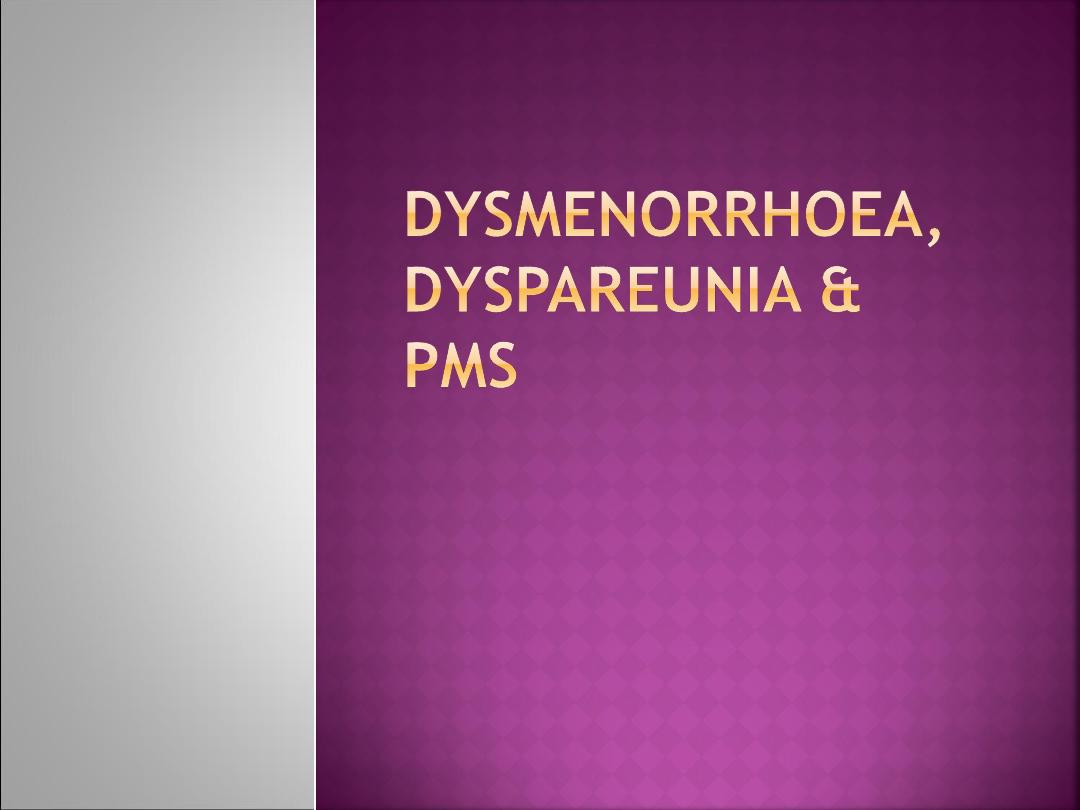

By the end of the lecture the student is
expected to
understand the definition, possible causes of
dysmenorrhoea, dyspareunia and impact on
women’s life
Know how to investigate and come up with a
diagnosis
Treatment options and effectiveness

Have a basic knowledge on PMS in term of
the common symptoms, possible theories
behind its occurrence
Know how to reach a diagnosis using
symptom chart and exclusion
Know the commonly suggested treatment
options and their efficacy
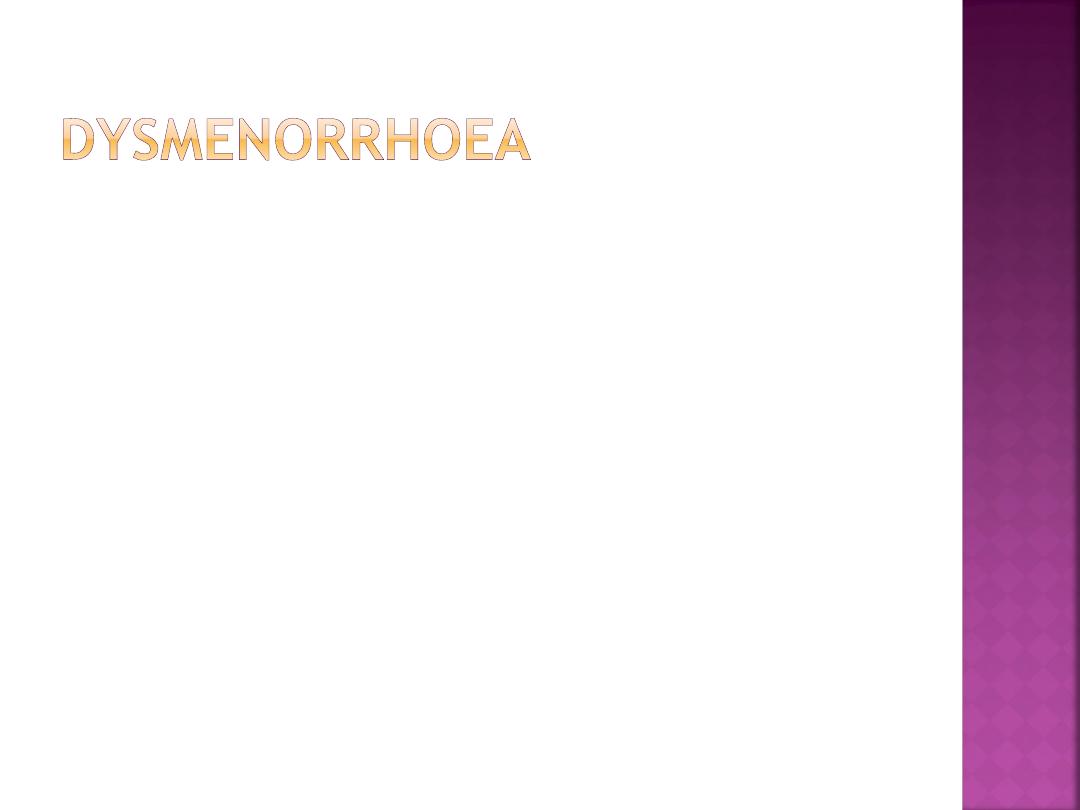
Defined as painful menstruation.
Although some pain during period is normal,
pain that is sever enough to limit normal
activity or requires medication is abnormal
and requires evaluation.
Affects about 50% of menstruating women
and regarded as sever in 10% of sufferers
Dysmenorrhoea is the leading cause for
absence from school or work

Primary dysmenorrhoea: occurs in otherwise
healthy women with no organic cause
Secondary dysmenorrhoea: due to an
underlying disease or structural uterine
abnormality
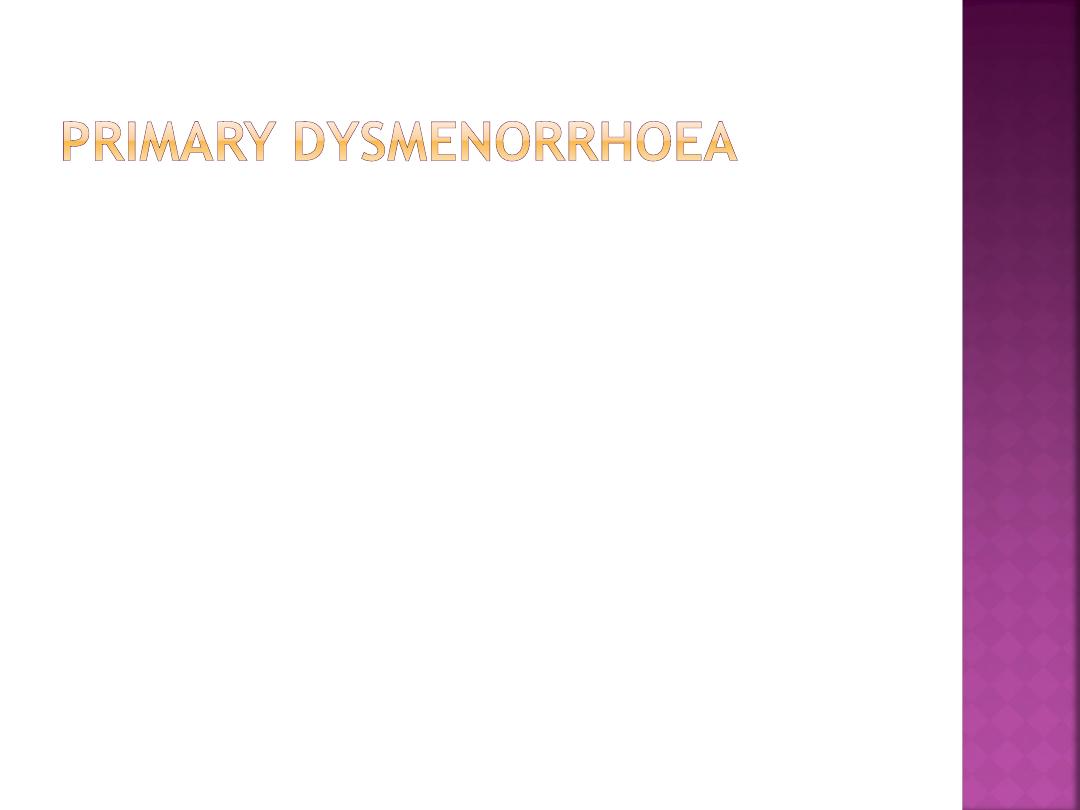
Onset a few years after menarche
Cycles are regular
Pain for less than 2 days
Cramping pain radiating to the thighs
Nausea and other GI symptoms
relieved after childbirth
Prostaglandins & leukotrins play a major role
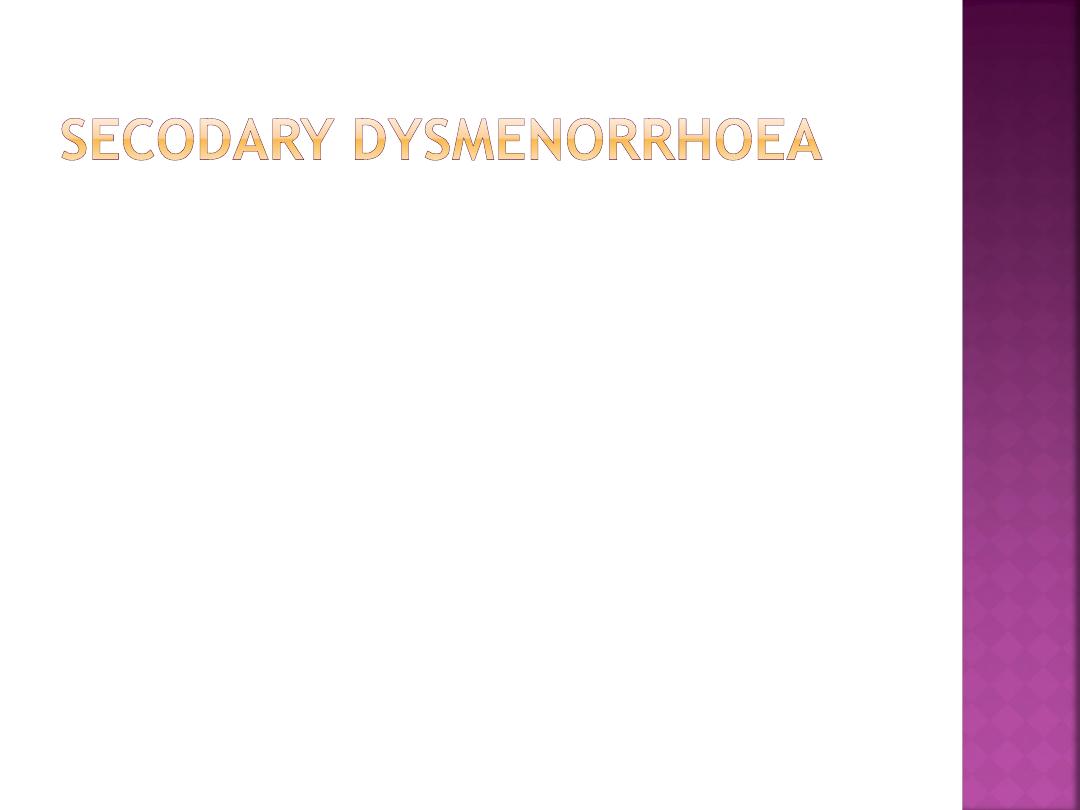
Causes :
endometriosis
adenomyosis
chronic pelvic inflammatory disease
Pelvic congestion syndrome
pelvic adhesions
IUD
fibroids
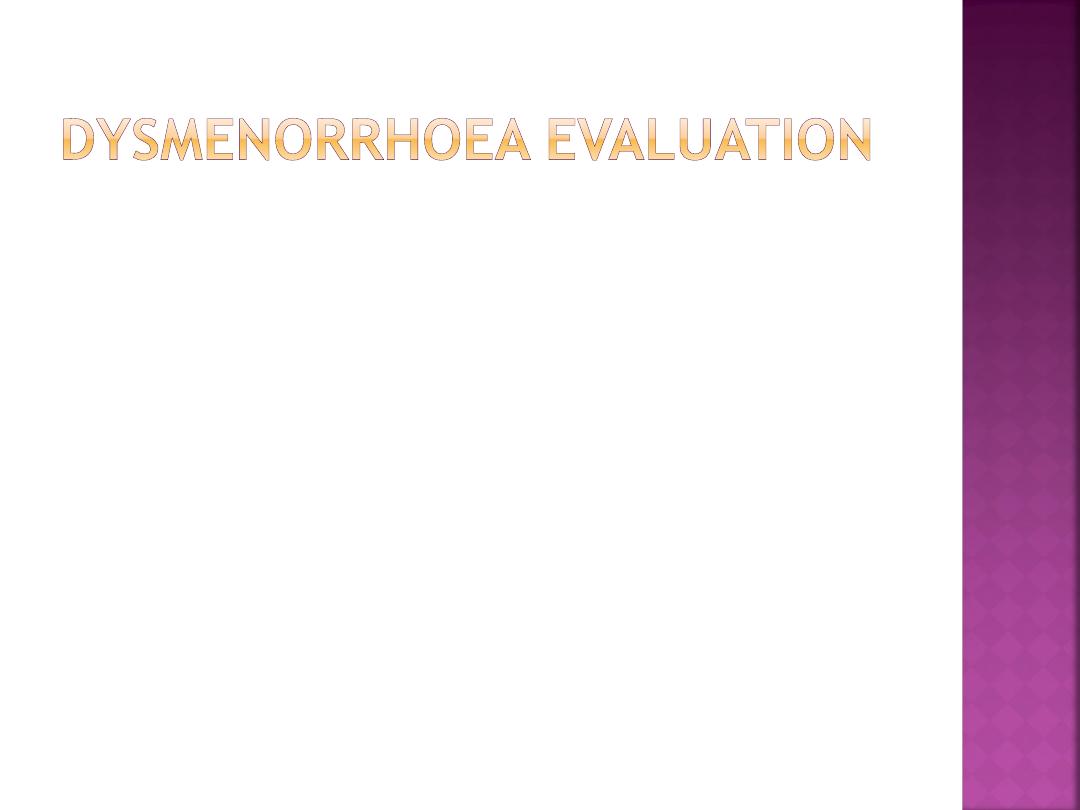
History
Physical examination:
Is pelvic examination needed?
Recommended in all cases except if
not sexually active with typical
primary dysmenorrhoea
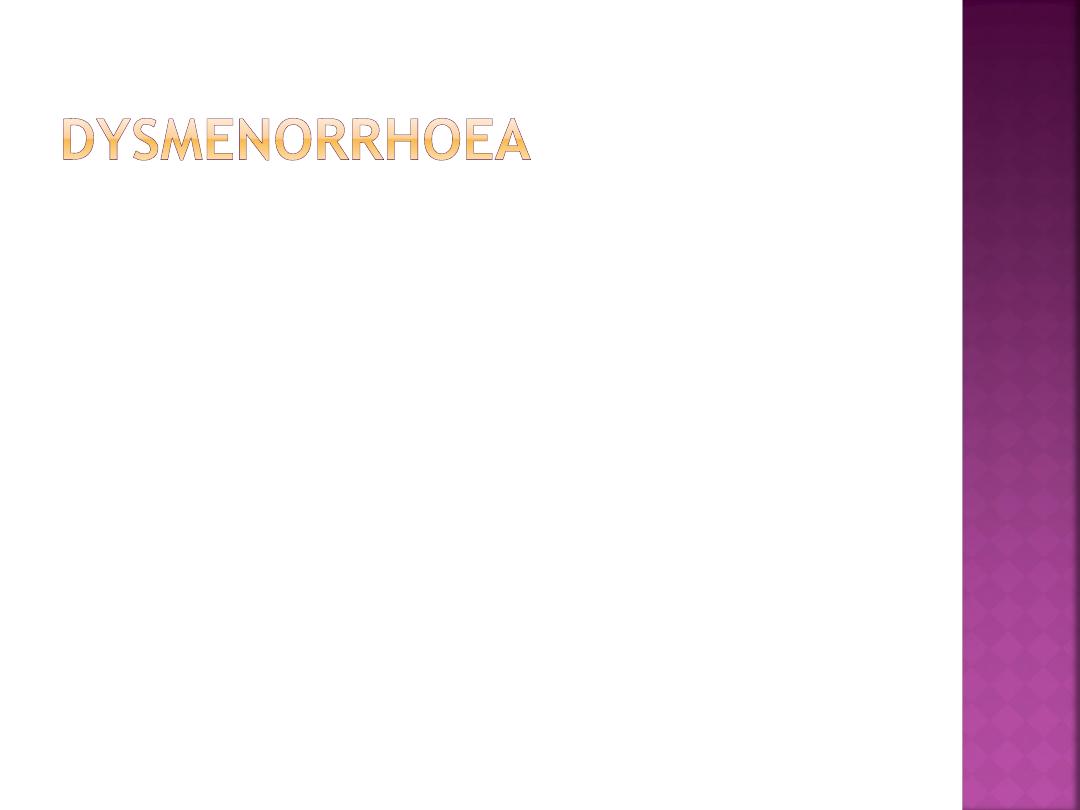
Investigations needed ?
Pelvic Ultrasound if
clinical pelvic examination abnormal
symptoms suggestive of secondary
dysmenorrhoea but PV not conclusive or not
possible
Laparoscopy
Sometimes needed
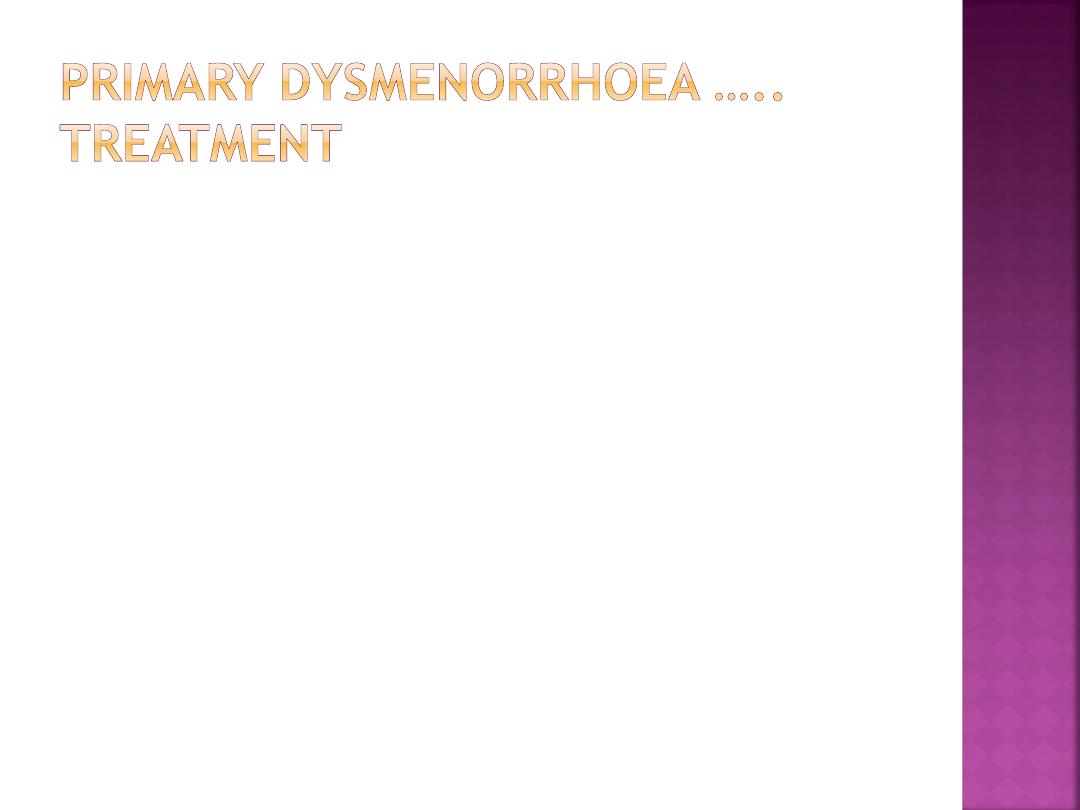
Simple analgesics: paracetamol, NSAID
Hormonal therapy: as a second line when
simple analgesia fails. COCP are 90%
effective
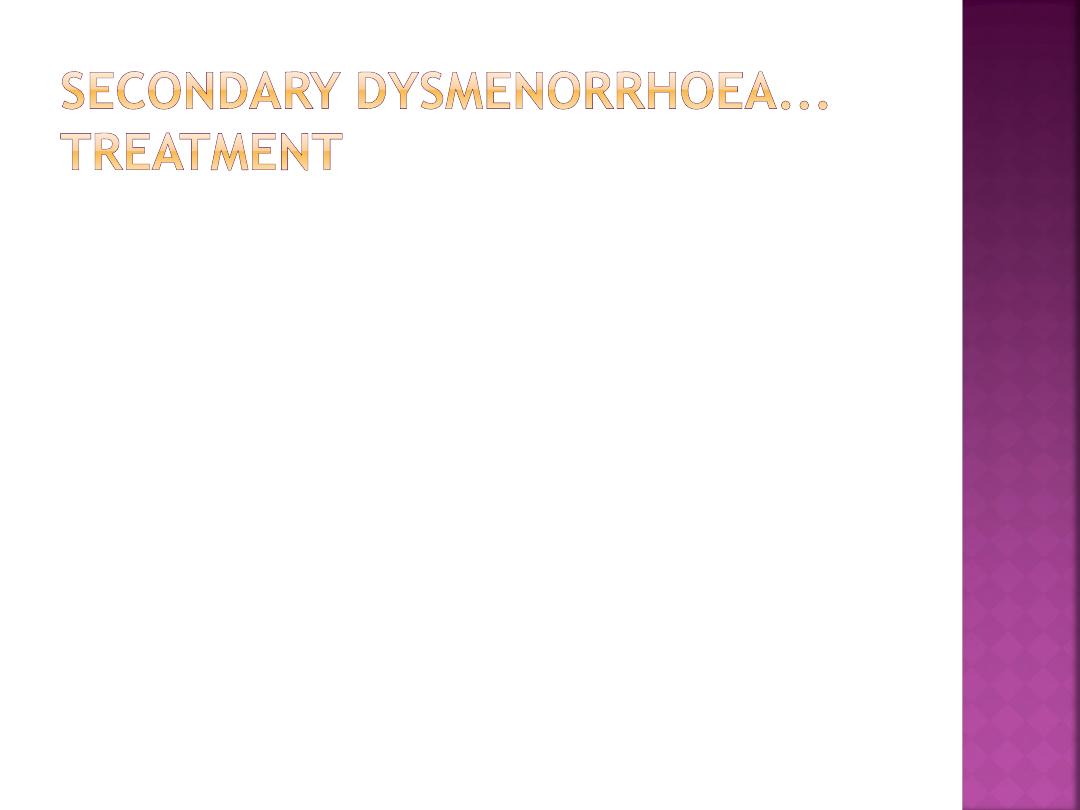
Treat the underlying cause
NSAID’s
Hormonal contraceptives
Pre-sacral neurectomy in selected cases

Defined as pain during or after intercourse
It is not a disease ,but rather a symptom of
an underlying physical or psychological
disorder
Could be superficial at entrance of the
vagina or deep in the pelvis on deep
penetration

Superficial dyspareunia:
Vaginismus
Vaginal infection
Episiotomy scars & narrowed vagina
Insufficient vaginal lubrication
Atrophic vagina due to menopause

Recurrent or persistent involuntary
spasm of the musculature of the outer
third of the vagina that interferes with
intercourse”
Etiological background
lack of sex education/information
negative attitudes about sexuality
sexual abuse or trauma

Deep dyspareunia:
PID
Endometriosis
Ovarian cysts
Ectopic pregnancy
Pelvic congestion
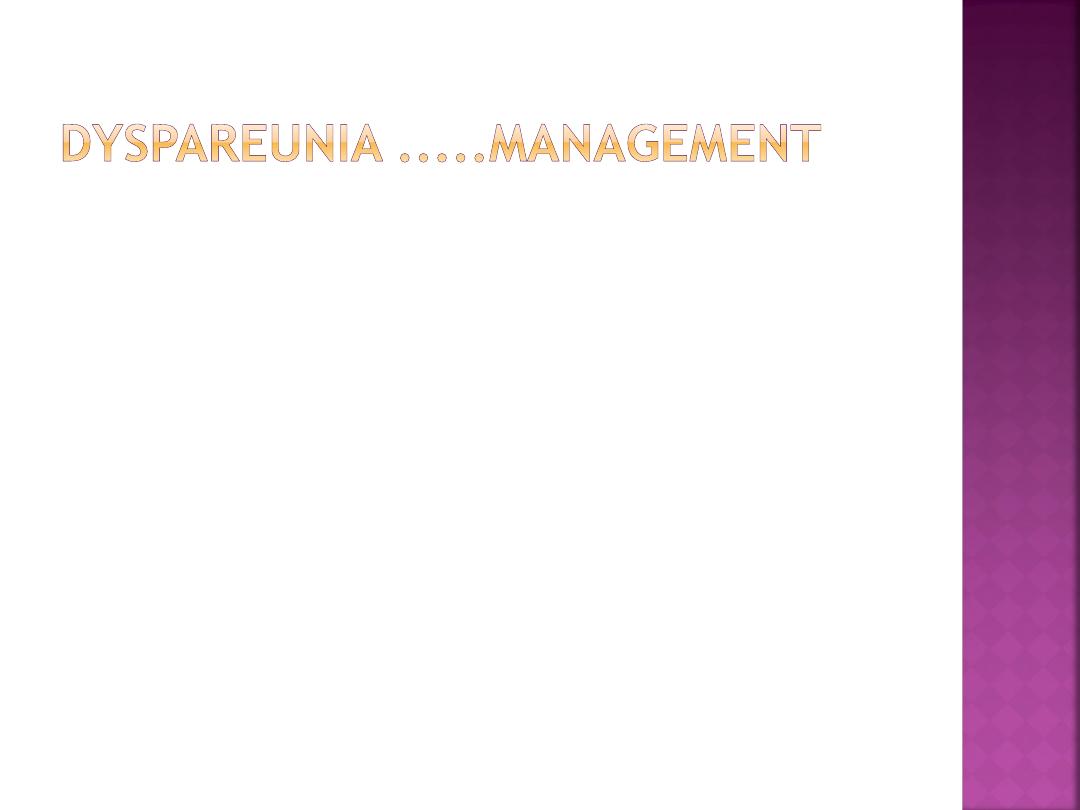
Aimed at identifying & properly treating the
underlying cause
Adequate foreplay or k-y gel for vaginal
dryness
Topical oestrogen for atrophic vagina
surgery may sometimes be required for
vaginal prolapse or inadequate vagina
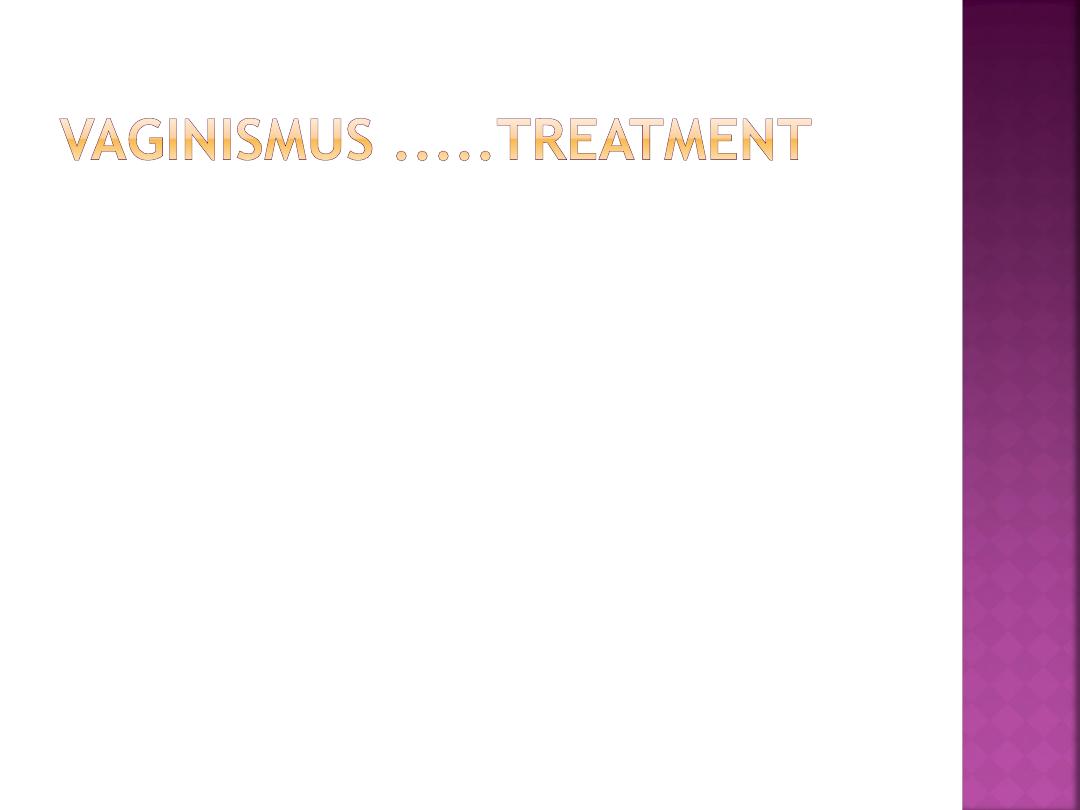
Insertion of a graduated set of dilators in the
vagina
psychotherapy
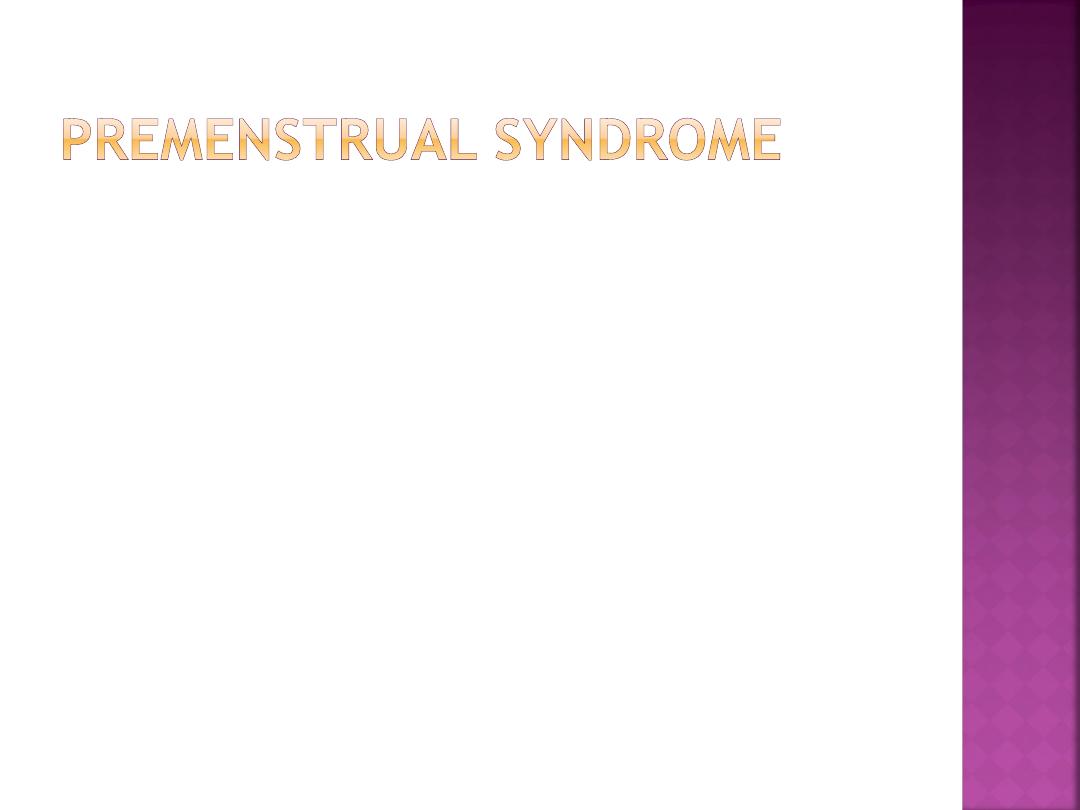
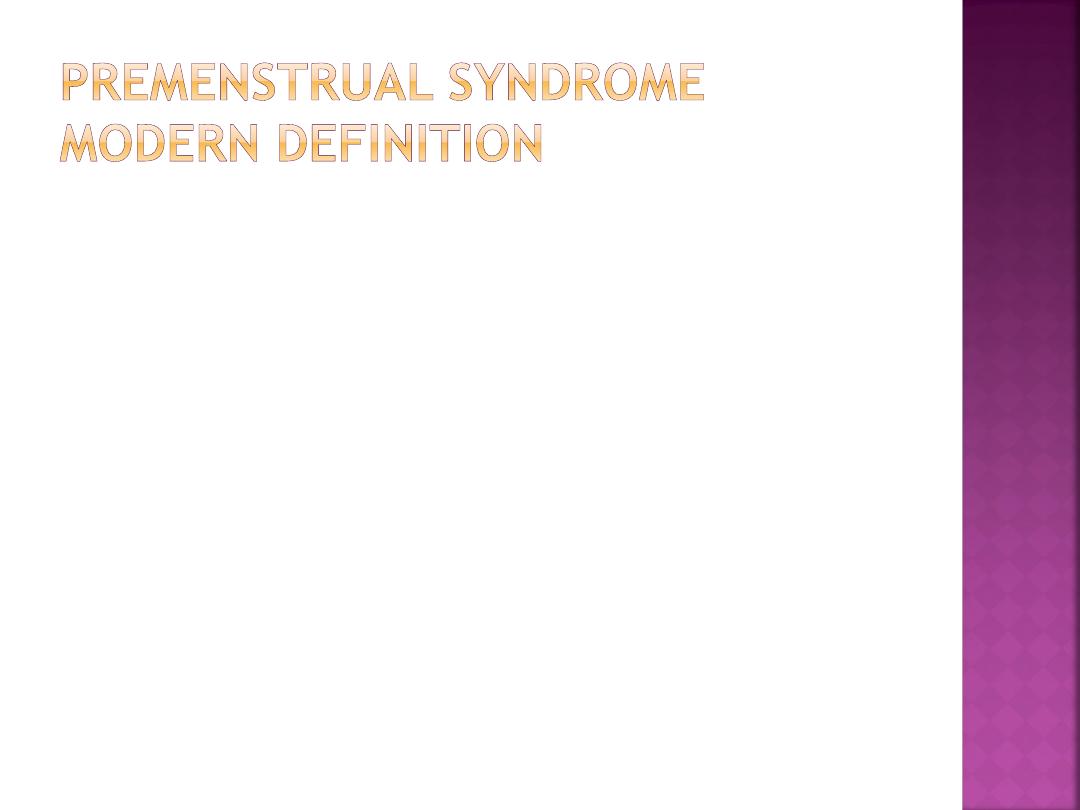
Distressing physical, psychological and behavioural
symptoms, not caused by organic disease, which
regularly recur during the same phase of the
menstrual (ovarian) cycle and which significantly
regress or disappear during the remainder of the
cycle
Magos & Studd (1984)

Affects 30-40% of women of child bearing age
but in 10% the symptoms are so sever and
disabling (premenstrual Dysphoric dysorders
(PMDD)
Over 150 symptoms have been documented
but the three most prominent are ,
irritability, tension & dysphoria (unhappiness)

Is poorly understood but a major role played
by
Cyclical ovarian activity
Estradiol
Progesterone
Neurotransmitters serotonin & GABA
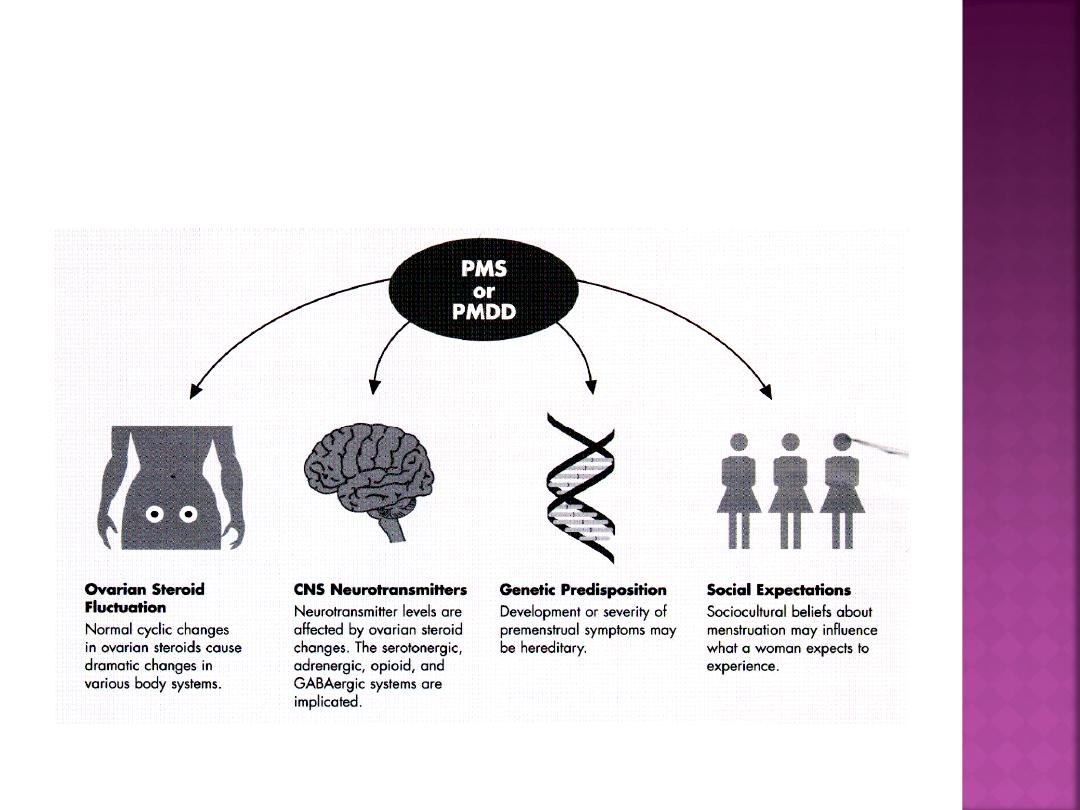
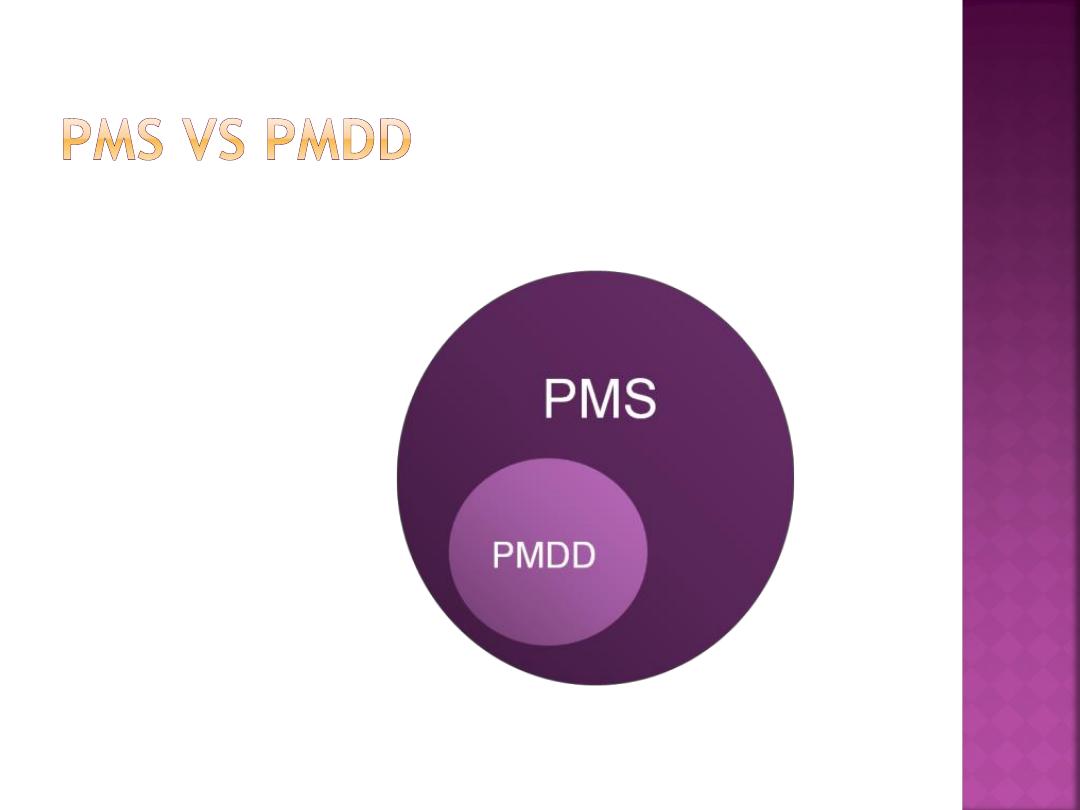
PMDD may be viewed as a more severe form of
PMS
Rapkin A. Psychoneuroendocrinology. 2003.
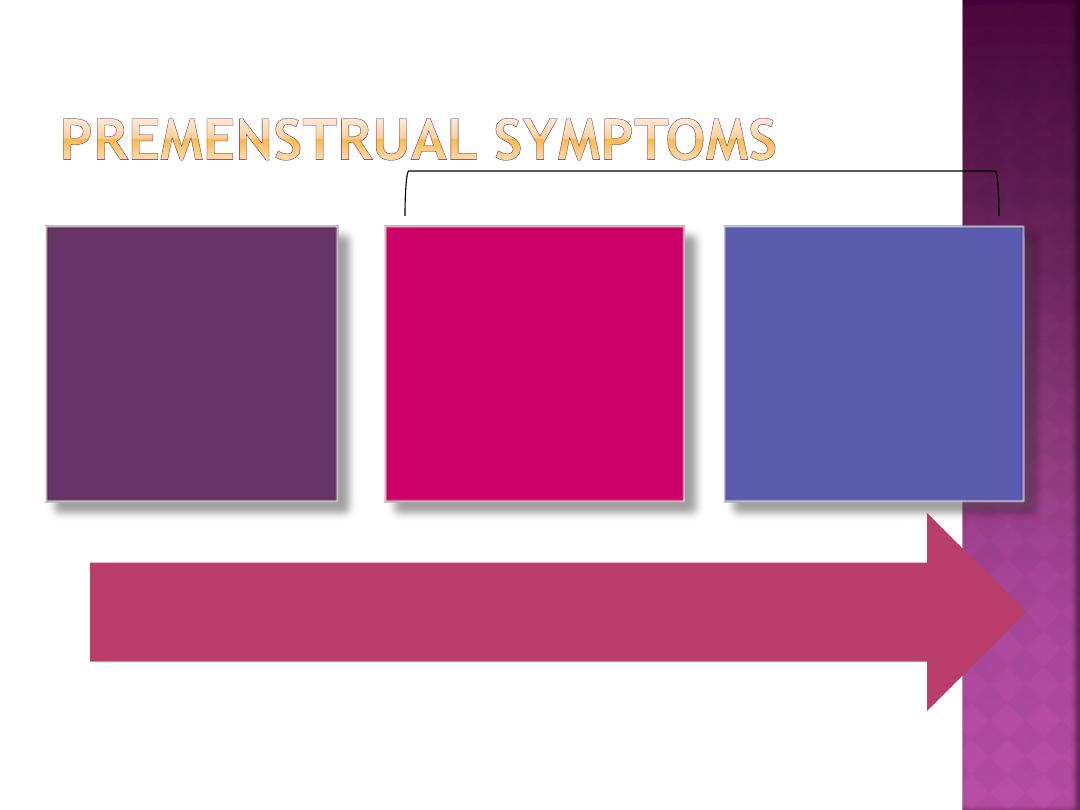
Pre-menstrual
Minor
symptoms
PMS
(Pre-menstrual
Syndrome)
Moderate
symptoms
PMDD
(Pre-menstrual
Dysphoric
Disorder)
(Sever symptoms)
More common/
Less severe
Less common/
More severe
Disorders
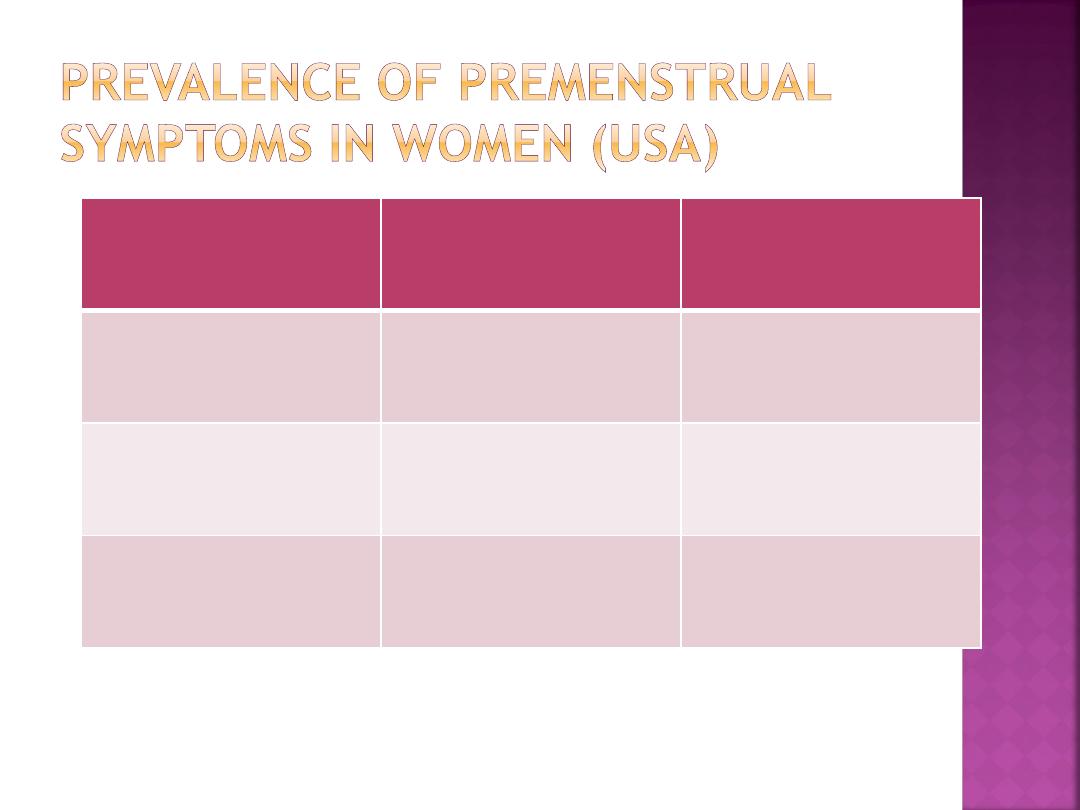
Percent
Estimated #
(in millions)
Minor PM
symptoms
70 – 90%
43 – 55
PMS
20 – 40%
12 – 25
PMDD
3 – 8%
2 – 5
Ginsberg KA, et al. 2000.
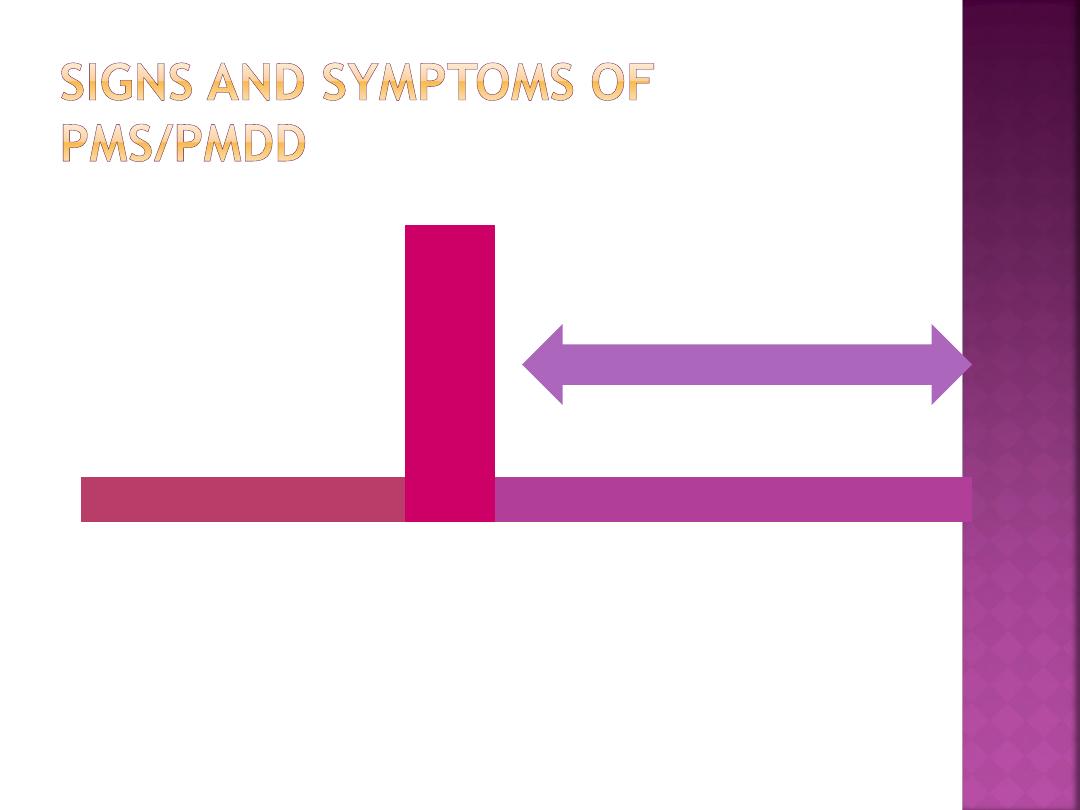
1 2 3 4 5 6 7 8 9 10 11 12 13 14 15 16 17 18 19 20 21 22 23 24 25 26 27 28
Days of Menstrual Cycle
Follicular Phase
Ov
ul
ati
on
Luteal Phase
Symptoms occur
Malone DC. Am J Manag Care. 2005
Dickerson LM et al. Am Fam Physician. 2003.
more…

Physiological
Behavioral
Psychological
Malone DC. Am J Manag Care. 2005
Dickerson LM et al. Am Fam Physician. 2003.
More than 150 symptoms associated with PMS
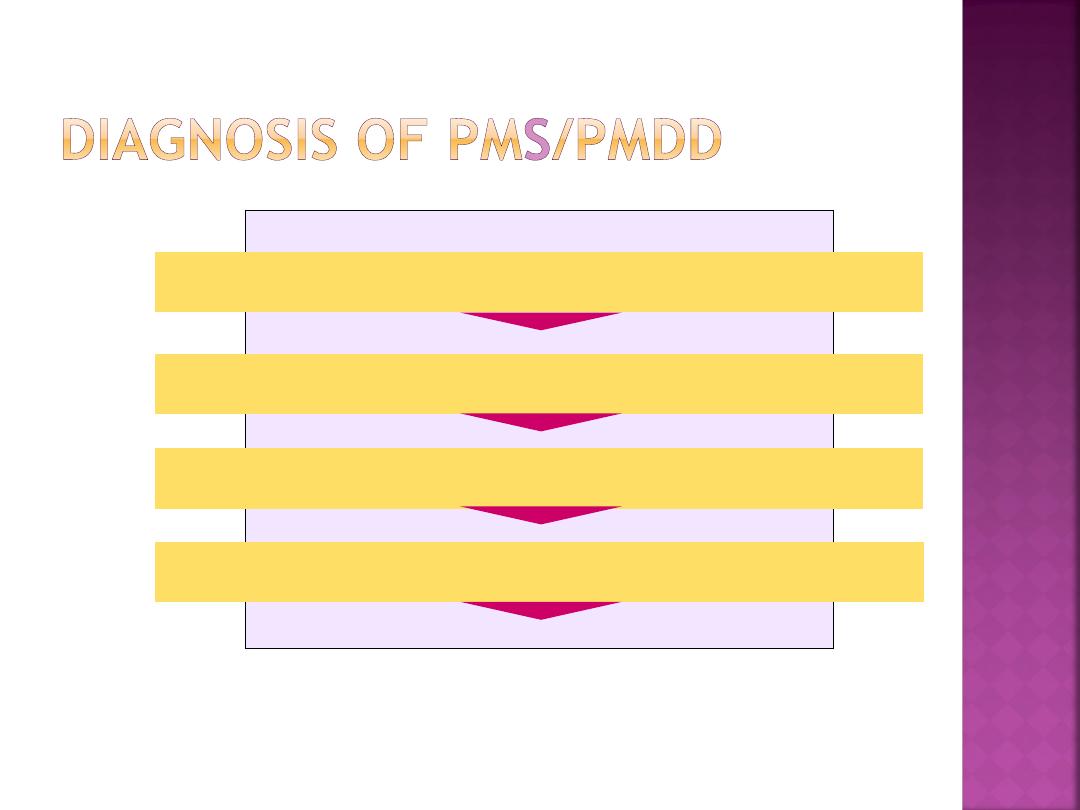
Resolves near the start of menstruation
Creates problems or impairment
Not better explained by another diagnosis
Occur in luteal phase
Johnson SR. Obstet Gynecol. 2004; Rapkin AJ. Am J Manag Care. 2005; ACOG. ACOG Practice
Bulletin No. 15. 2000; Dickerson LM et al. Am Fam Physician. 2003.

Emotional and behavioural symptoms can
include:
anxiety
mood swings
tiredness
irritability
depression
a loss in confidence
clumsiness
difficulty sleeping
forgetfulness
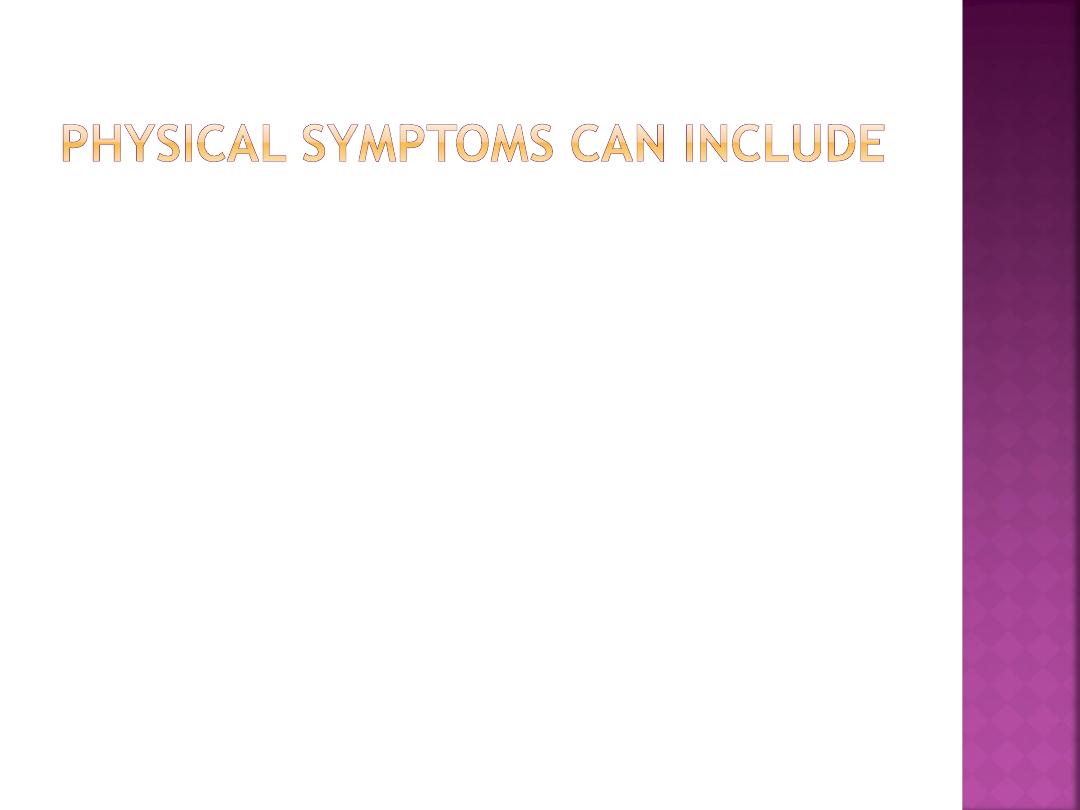
headaches
dizziness
feeling bloated
feeling sick
a change in your appetite or food cravings
pain in your joints
tender breasts
abdominal (tummy) pain
backache
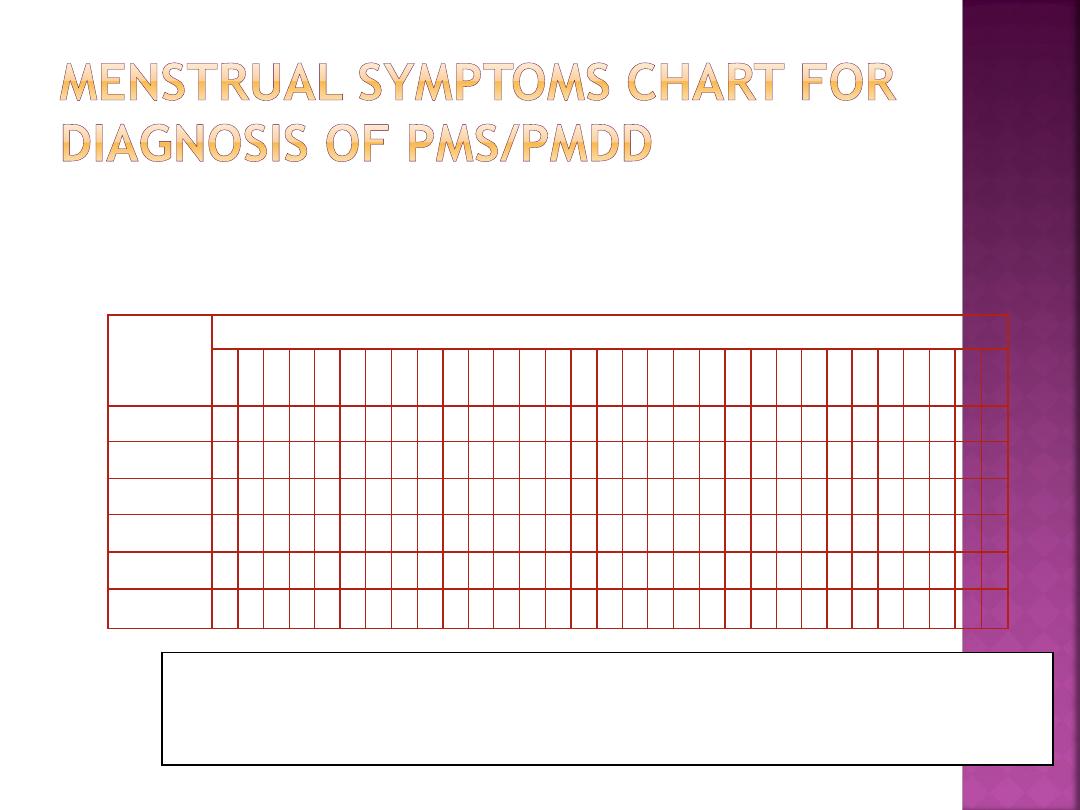
List the symptoms you have in the left column. Circle the dates of your menstrual period. Fill in the boxes on
the days your symptoms occur. Indicate severity by filling in the boxes as shown: Mild, Moderate, Severe
Download from:
www.arhp.org/menstrualsymptomschart
Symptoms
Day of the month
1
2
3
4
5
6
7
8
9
10
11
12
13
14
15
16
17
18
19
20
21
22
23
24
25
26
27
27
29
30
31
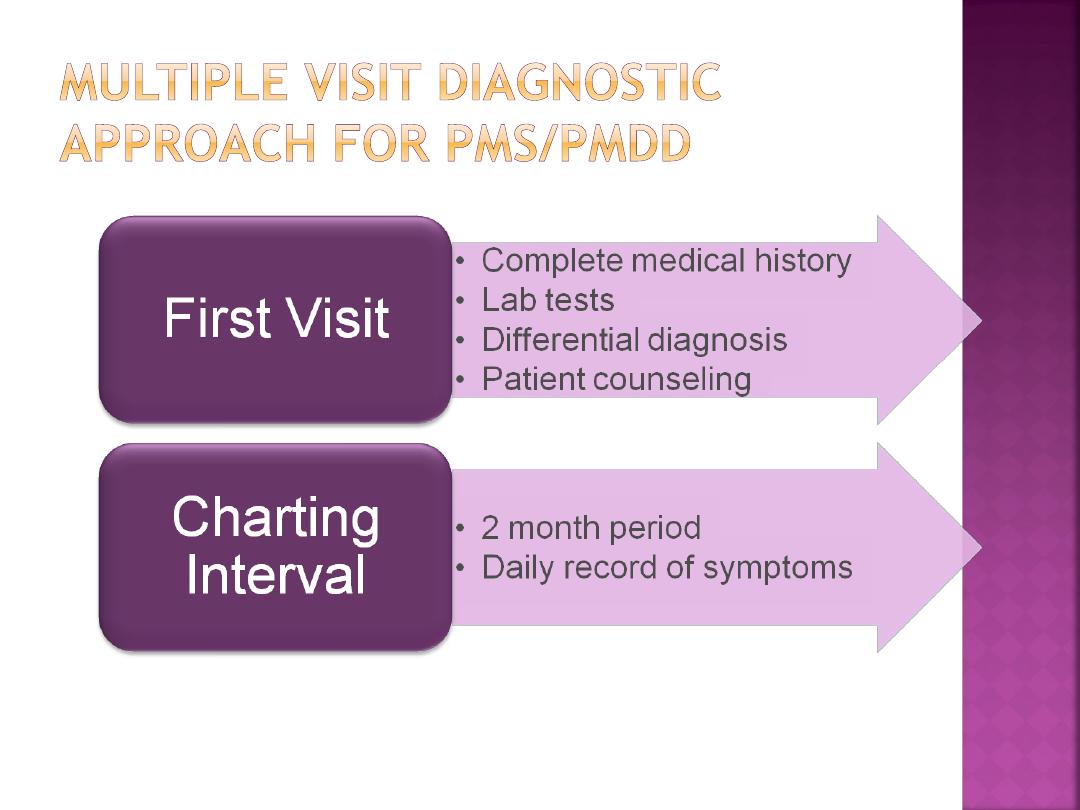
Kaur G, et al. Cleve Clin Med. 2004.
Johnson SR. Obstet Gynecol. 2004.
more…
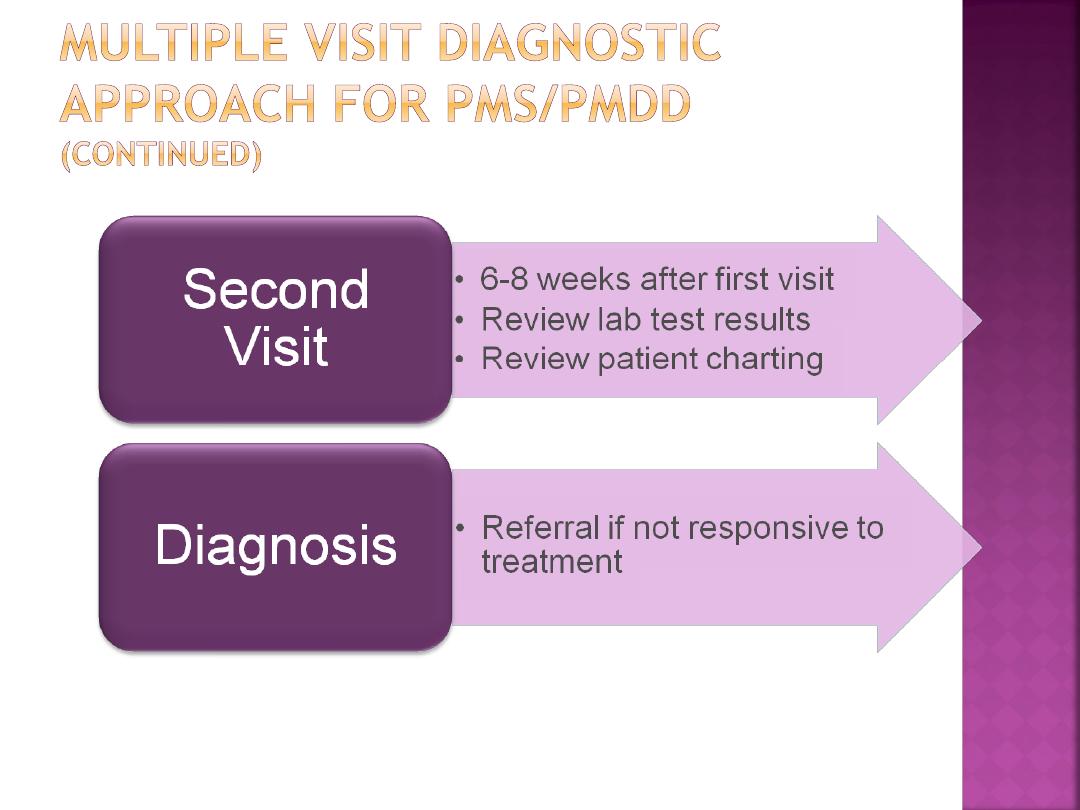
Kaur G, et al. Cleve Clin Med. 2004.
Johnson SR. Obstet Gynecol. 2004.
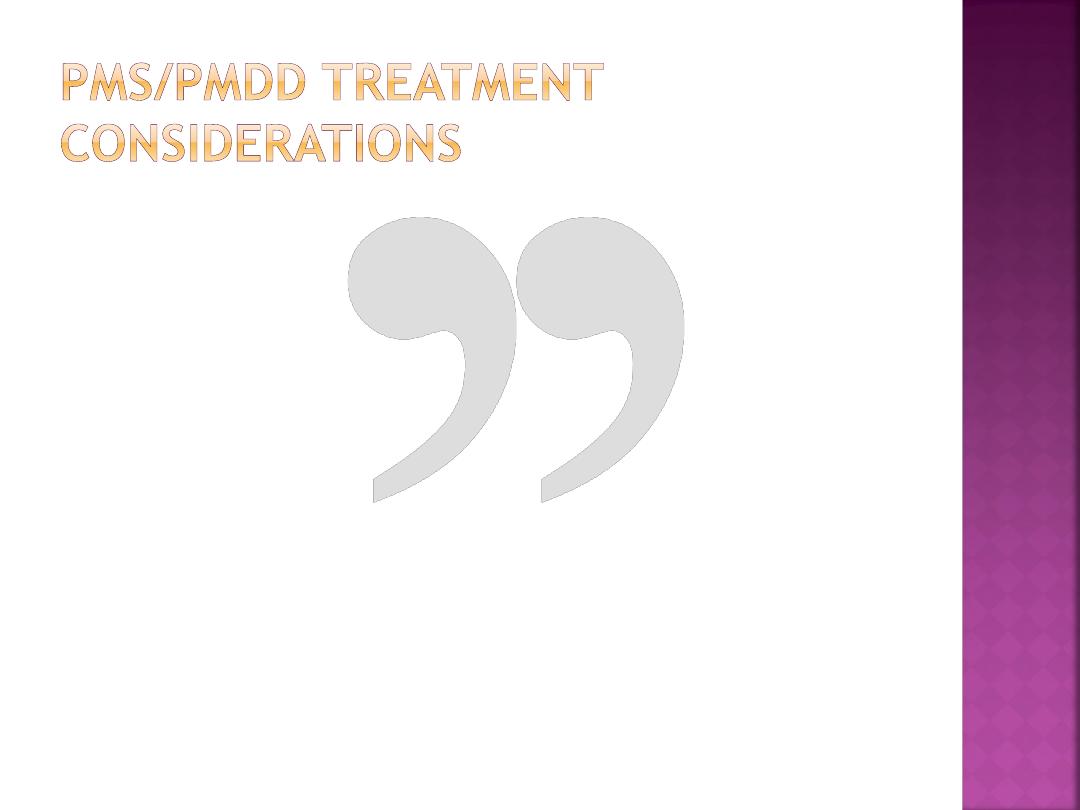
“…no single
intervention is effective
for all women.”
Dimmock PW et al
Lancet 2000
Dimmock PW et al. Lancet. 2000.
Steiner M. Am Fam Physician. 2003.

General advice about diet, exercise & stress
reduction should be considered before
starting specific treatment
Women with marked underlying
psychopatology should see a psychiatrist
Symptom diary should be used to assess the
effect of treatment

Eat frequent and
smaller portions of
foods high in complex
carbohydrates
Johnson SR. Obstet Gynecol. 2004.
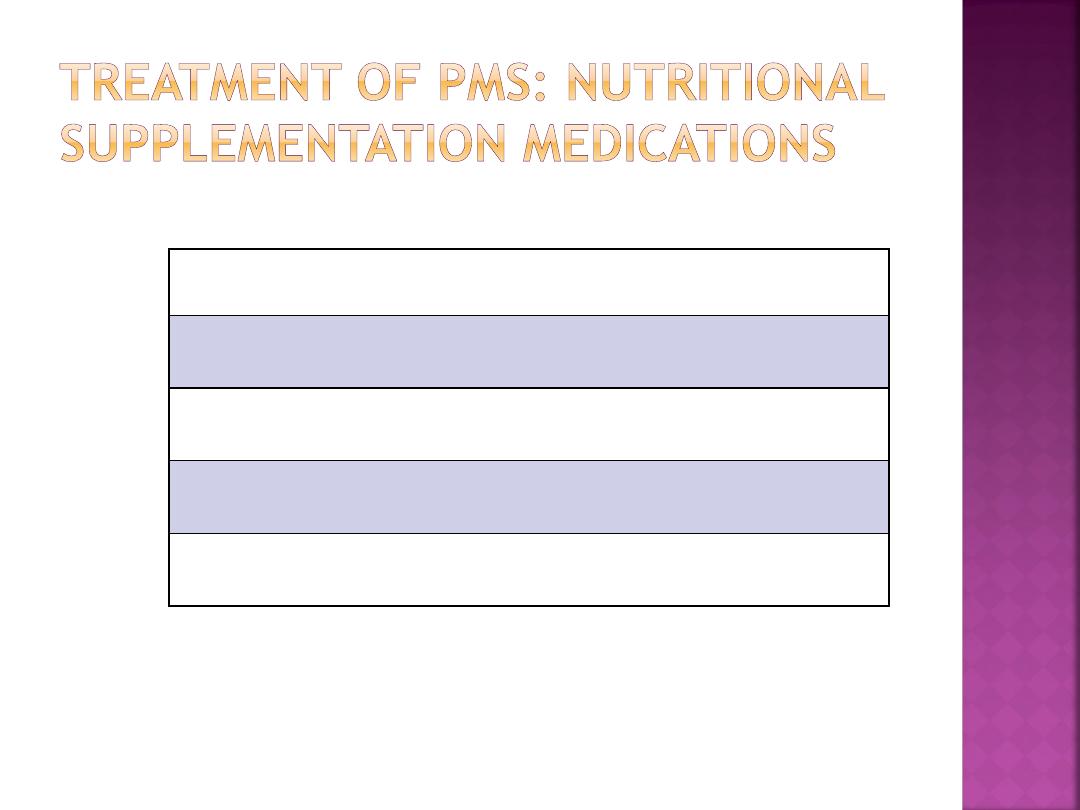
Vitamin B
6,
up to 100 mg per day
*
Vitamin E, up to 600 IU per day
*
Calcium carbonate with vitamin D
Magnesium, up to 500 mg per day
NSAIDS
Bhatia SC et al. Am Fam Physician.2002; Bowman MA. 2000. Freeman EW, Sondheimer SJ. J
Clin Psychiatry. 2003; Endicott J et al. Patient Care. 1996; Johnson WG et al. Psychosom Med.
1995; Rapkin AJ. Am J Manag Care. 2005.
*limited benefit

✓
Aerobic exercise/Yoga
✓
Relaxation and stress management
✓
Anger management
✓
Self-help support groups
✓
Therapy (individual, couples, cognitive-
behavioral, )
✓
Smoking cessation
✓
Regular sleep

Selective serotonin re-uptake inhibitors
(SSRI) ....e.g Fluoxetine significantly reduces
tension, irritability & dysphoria (4-6 times
better )
Progestogens
COCP
Diuretics
Antidepressants
danazole
GnRH A

Hysterectomy & BSO

Dysmenorrhoea is not uncommon complaint.
Detailed history & gynae examination
together with pelvic USS and sometimes
laparoscopy enables diagnosis appropriate
treatment
Dyspareunia can be very distressing and a
cause for broken sexual life. It may be
confused with vaginismus though this is
largely due to fear of pain .previous H/O
sexual abuse or trauma must be sought but
an organic must be excluded

PMS can be confused with so many other
conditions and diagnosis sometimes by
exclusion. PMS diary helps to establish
diagnosis and assess severity of symptoms
Treatment requires multidisciplinary team
approach involving gynaecologist,
psychotherapist, social worker, self-support
groups and husband support
Pharmacological agents help to alleviate
symptoms but eventually oophorectomy may
be required
